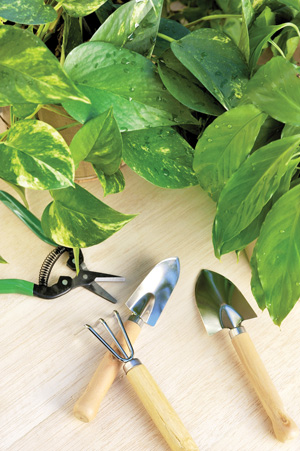Power plants
Believe it or not, the average American spends approximately 90 […]

Ivies (hedera species) prefer indirect light, like to be evenly watered, and don’t mind drying out occasionally.
Spider plants (chlorophytum species) are great pollution fighters, grow well in moderate light, and attract few insects.
Peace lilies (spathiphyllum species) should be kept moist and wilt quickly when they need to be watered, but recover nicely. (Caution: Peace lilies are toxic to cats and dogs.)
Ferns (nephrolepsis species) call for medium or bright indirect light; the Boston fern is a good pollution-fighting variety and requires little maintenance aside from removing dropping fronds.
Weeping fig trees (ficus species) do well in medium to high light and need not be watered until several signal leaves turn yellow; they’re sensitive to changes in light and cold drafts, but once established, entail little effort.







